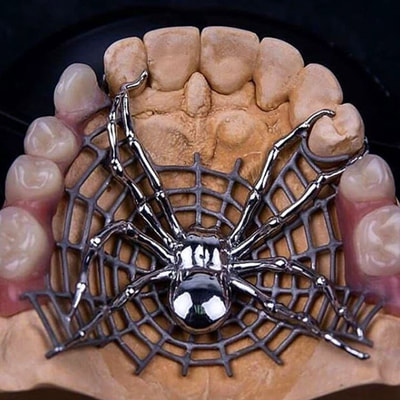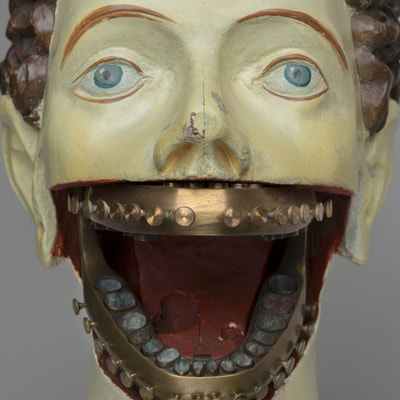|
Every year, not long after things get rolling in the summer, I lecture to the 3rd-year operative class about tooth whitening and vital and non-vital bleaching. I had some resources to share with the students, so one year, I discovered and started using this platform called Bublup. It reminds me a little of Pinterest, but it's easier to organize items, which can be pretty much any type of file. It's also easy to share information with anyone as a beautiful collection of items Bublup calls a roll. Here's the link to the roll I created to supplement my lecture:
https://rolls.bublup.com/erinhymel/bleaching
0 Comments
During caries excavation, we are excavating infected dentin and leaving affected (and normal) dentin behind. But what’s the difference?
UNSUPPORTED ENAMEL!
We could have all left Op1 lecture much sooner last Tuesday morning if any of the students had figured this out. We assistant professors in the back of the auditorium had our fingers crossed! But just repeating a phrase without understanding what it means won't help anyone succeed as an operative dentist. Perhaps it's hard to understand enamel - and its need for support - when the teeth you treat are plastic. (I must add that after yesterday's lab assignment, the concept of unsupported enamel is already making more sense!) So let's dive into the textbook definition of unsupported enamel and see how it relates to the all important concept of margin strength in tooth preparation. Just a few creepy images from the world of dentistry to haunt your Halloween!
Retainers? No, not talking ortho here. Rubber dam retainers. (Or clamps, if you prefer less friendly terminology.)
Second-year dental students have not administered many injections when they begin seeing patients in operative clinic. There are so many things for them to have to think about during their appointments. The question of which injections need to be given should be simple to answer. Answering it will become second nature with time, but until it does, it's good to keep helpful information handy. Because what better way to attract new readers than with the riveting topic of those tiny numbers on the handles of instruments such as hatchets and hoes?! This is one of those things people will tell you might turn up on boards, so you should know it. Is it commonly asked on boards? I don't know. I don't remember seeing it on my board exam, but I took that quite some time ago.
Because I think of a million things during lecture and a million more on my drive home...10/17/2018 Since I've started working with students, I find myself thinking of a million things I want to tell them. Sometimes I think of things during lecture, or on my drive home, or on a day in between class sessions. I decided a blog might be a good way to organize my thoughts and share them with my students and anyone else who might be interested.
When I started practicing dentistry, I had so much knowledge bouncing around in my brain. I started accumulating resources that I would use to sort through my thoughts, clarify concepts, and answer the questions I inevitably still had. Over the past three years, as I've gathered together this binder - both physically in 3-hole punched form and digitally - I've thought about sharing my findings (always crediting the creators when possible, of course), so that others can access the resources I've discovered and found to be useful. I also want to share my personal experiences and insight, so here we go...my blog. Funny story - when I worked as a graphic designer, I had the idea of starting a blog, like, a million times. I even named my blog, created a logo and layout, started brainstorming content. The trouble was, I could never actually get it off the ground. I was so concerned with it being the perfect design/lifestyle blog, that I never pressed that "Publish" button at the top of the page. Practicing dentistry has taught me to strive for excellence, but leave that word "perfect" out of the conversation. It's freeing. I am finally pressing "Publish," confident that I can create an imperfect blog that I will enjoy writing and hopefully you will enjoy reading. So follow this blog, or just check back from time to time to see what's new. I would appreciate hearing from readers, so please comment or feel free to email me. You can also catch up with similar content on my Instagram - @erinhymeldds - for shorter text and quick posts that might never make it to the blog! |
AuthorA dentist and educator, sharing resources and experiences with her colleagues and students. Archives
September 2020
Categories
All
Side note - whenever I refer to Sturdevant or Summitt, I'm citing one of these two electronic textbooks:
- Heymann, Harold, et al. Sturdevant's Art and Science of Operative Dentistry. 6th ed., Mosby, 2012. - Hilton, Thomas J. Summitt's Fundamentals of Operative Dentistry: A Contemporary Approach. 4th ed., Quintessence, 2013. |






 RSS Feed
RSS Feed